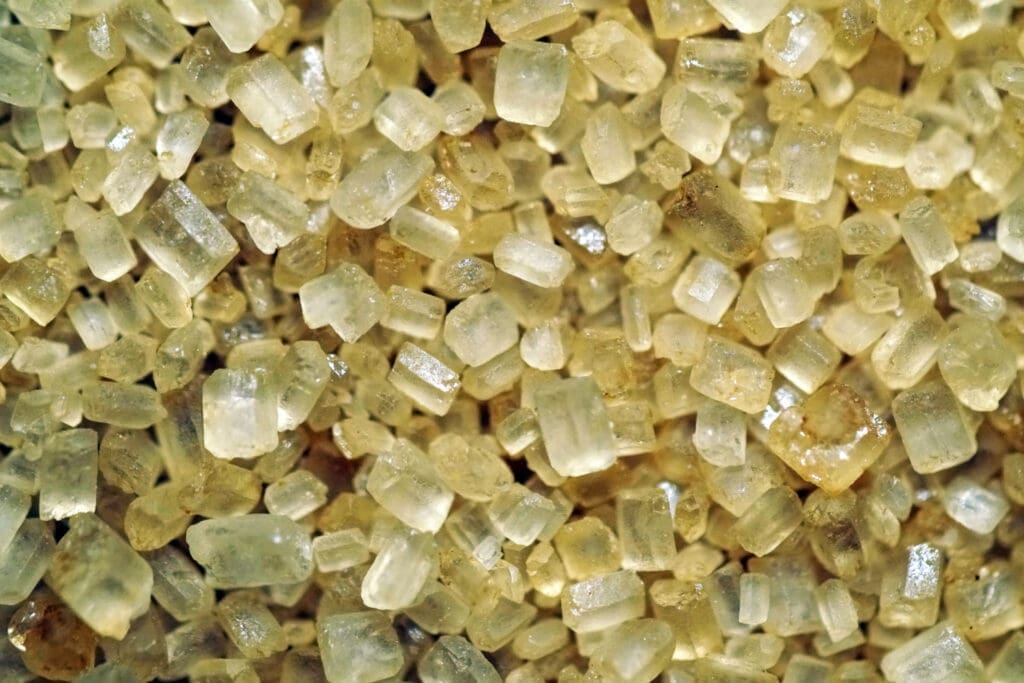
Acidum sulphuricum
Latin name: Acidum sulphuricum
Short name: Sul-ac
Common name: Sulphuric Acid | Oil of Vitriol | Spirit of Sulphur | Hydrogen Sulphate | Vitriolic Acid
Primary miasm: Syphilitic Secondary miasm(s): Sycotic
Kingdom: Minerals
Family: Inorgic acid
- Symptomatology
- Remedy Information
- Differentiation & Application
A strong, corrosive mineral acid with the chemical formula H₂SO₄, Sulphuricum acidum is produced by oxidising sulphur and combining it with water. It is colourless to slightly yellow, oily, and extremely reactive.
Widely used in industry for battery acid, fertilisers, chemical synthesis, cleaning agents, and metallurgy. Historically used in medicine as an astringent and caustic.
First proved by Hahnemann; symptoms confirmed by Allen, Hering, and Clarke. Much clinical use based on slow destructive states and “hurry-with-exhaustion” themes.
- Mucous membranes – especially of mouth, throat, and gastrointestinal tract
- Stomach and digestion – acid dyspepsia, ulcers, heartburn
- Circulation – bruising tendency, venous congestion, haemorrhage
- Skin – ulceration, ecchymosis, chemical burn-like states
- Nerves – exhaustion, tremor, shaking, internal weakness
- Right side – several complaints are more right-sided
- Aged and broken-down constitutions – suited to people “burned out” or prematurely old
- Warmth
- Covering
- Lying quietly
- Even pressure
- Alcohol (strangely ameliorates some gastric symptoms)
- Discharge of gas or stool
- Eating (temporarily relieves stomach pain)
- Cold air
- Motion
- Jar or touch
- Open air
- Fasting
- Sudden change of position
- After haemorrhage or loss of fluids
- Physical or mental exertion
- Muriatic acid – Similar oral ulceration but more severe prostration and haemorrhagic diathesis
- Phosphoric acid – Weakness after grief or loss, but more mentally dull than hurried
- Carbo vegetabilis – Extreme debility, but more coldness and gas
- Nitric acid – Acrid, sharp ulcers; more stabbing pains, intolerance to touch
- Arsenicum album – Burning pains, prostration, and anxiety, but with more restlessness and fear of death
- Complementary: Phosphoric acid, Carbo veg., Arsenicum album
- Antidotes: Nux vomica, Pulsatilla
- Follows well: After abuse of alcohol or stimulants
- Precedes well: Constitutional remedies after acute restoration
- Inimical: Sepia (generally does not follow well)
Sulphuricum acidum represents the collapse of tone, tissue, and time. The organism is burning out—racing forward while falling apart. Suited to people worn down by disease, grief, excess, or age, it acts as a restorer of dignity and structure amidst corrosion. Its theme is one of internal trembling masked by outward haste, and its keynote is breakdown—ulcers, haemorrhage, exhaustion, and bruising. It brings healing where fire, friction, and fatigue have hollowed the system.
- Excellent for oral ulcerations, aphthae, and stomatitis, especially in elderly or cancer patients
- Valuable in gastric ulcers with burning pain and sour eructations
- Top remedy in haemorrhoids, especially with burning and prostration
- Useful in purpura, bruising, and senile skin ulceration
- Consider in tremor, especially with internal coldness and restlessness
- Apply in debility from alcoholism, chronic wasting, or convalescence
Mouth
- Aphthae, ulceration, painful
- Tongue, cracked, red
- Saliva, profuse, sour
Stomach
- Heartburn, acid
- Nausea, fasting, from
- Craves alcohol
Skin
- Ulcers, slow healing
- Bruising, tendency
- Ecchymosis, spontaneous
Extremities
- Trembling, internal
- Weakness, general
- Paralysis, senile
Generalities
- Old people, suited to
- Collapse, after haemorrhage
- Internal coldness
- Samuel Hahnemann – Materia Medica Pura: Original proving symptoms including oral ulcers and gastric complaints
- James Tyler Kent – Lectures on Homoeopathic Materia Medica: Mental themes of hurry and prostration
- William Boericke – Pocket Manual: Keynotes for aphthae, alcohol craving, and skin ulceration
- John Henry Clarke – Dictionary of Practical Materia Medica: Extended physical generals and clinical insights on haemorrhage, cachexia, and weakness
- C. Hering – Guiding Symptoms: Provided modality detail and skin/tremor symptom elaboration
- T.F. Allen – Encyclopedia of Pure Materia Medica: Documented extensive gastric, mucosal, and mental symptoms
